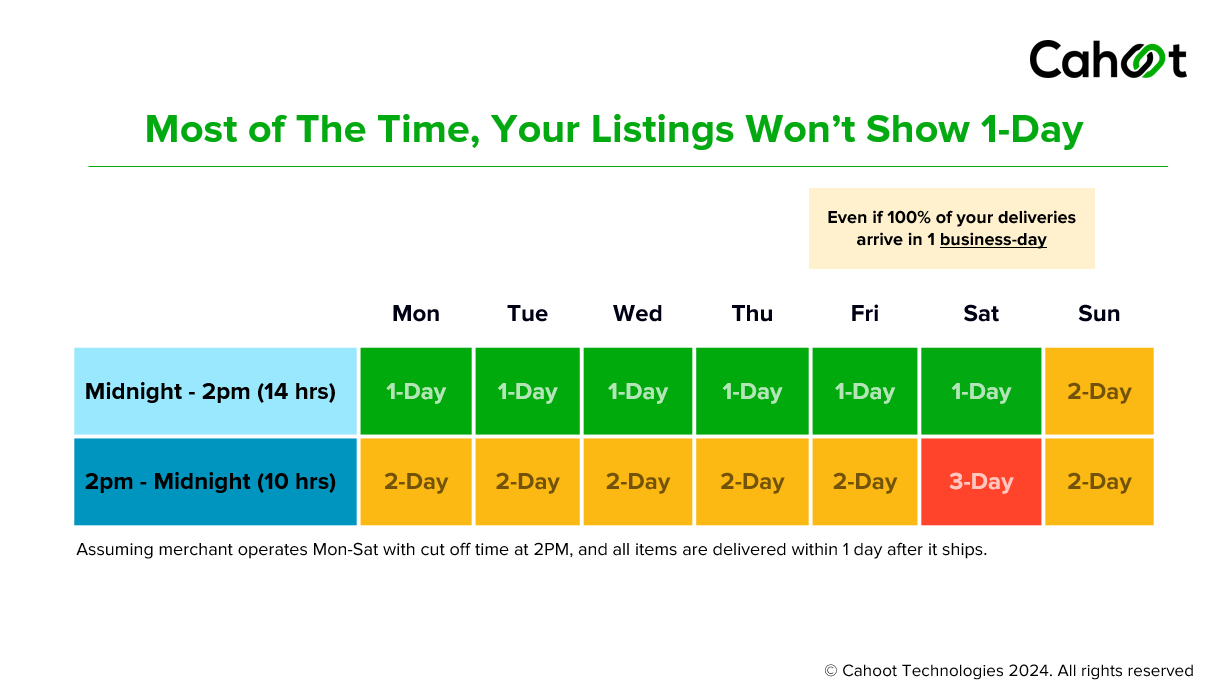Winning More on Amazon Using Seller Fulfilled Prime

This post was created by a guest of AfterShip. The views and opinions expressed herein aren't necessarily endorsed by us. If you're a community member interested in contributing to our blog, email us to inquire.
Seller Fulfilled Prime (SFP) demystified: What sets it apart?
Seller Fulfilled Prime (SFP) opens up a world of possibilities for sellers who aim to reach domestic Prime customers directly from their own warehouses.
Offering the coveted Prime branding and swift one-day and two-day delivery at no extra cost, SFP mirrors the seamless shopping experience of Fulfillment by Amazon (FBA). The only difference is that sellers are in charge of fulfilling orders from their own warehouse or through a third-party logistics service rather than relying on Amazon.
How does SFP differ from Amazon FBA?
While SFP may seem akin to FBA at first glance, there are nuanced distinctions that savvy sellers should consider:
1. Cost Efficiency: Unlike FBA's flat fee per unit fulfilled, SFP empowers sellers to manage their own expenses, making it particularly attractive for shipping oversized or bulky items more affordably.
2. Inventory Flexibility: FBA's fee structure, including storage fees and limitations, can challenge items with slower turnover or seasonal fluctuations. SFP alleviates these concerns by offering greater control over inventory management and scalability.
3. Lower Inventory Risk: With FBA, even if a seller has a warehouse in California, they still need to send inventory to the FBA warehouse in or near California. By switching from FBA to SFP, sellers no longer need to carry a mirror of their SKUs at both FBA and their own locations. This will mitigate inventory risks like dead stock and obsolescence if they occur and means sellers have less money tied up in inventory.
4. Channel Flexibility: While FBA Multi-Channel Fulfillment facilitates orders from external platforms, SFP extends beyond Amazon, enabling sellers to offer expedited shipping across diverse marketplaces, amplifying their reach and customer satisfaction.
5. Returns Management: With SFP, returned items are directed to the seller's specified address, enhancing flexibility in inspection and restocking, unlike FBA, where returns are centralized at Amazon warehouses.
6. Delivery Assurance: Unlike FBA, where delivery times may vary up to 4-5 days, SFP ensures consistent one-day and two-day delivery promises, enhancing customer satisfaction and loyalty.
What are the Amazon SFP requirements?
The Seller Fulfilled Prime Fulfillment program was closed to sellers for years until Amazon made sweeping changes in October 2023. Professional sellers can now apply for the Amazon SFP 30-day trial period and, once they pass, become enrolled SFP sellers.
Below is the list of requirements for Seller Fulfilled Prime for an enrolled seller:
- Free one-day and two-day delivery for Prime customers
- Free nationwide standard shipping for all customers
- Meet minimum thresholds for one-day and two-day delivery speeds as viewed by Prime customer detail page views
- An on-time delivery rate of at least 93.5%
- A valid tracking rate of at least 99%
- A seller-initiated cancellation rate of less than 0.5%
- Ship and deliver Prime orders on weekends (Saturday, Sunday, or both)
- Offer Free Returns on items weighing under 50 lb
- All post-order customer service inquiries are managed by Amazon
Navigating Delivery Speed Metrics
The seemingly straightforward one-day and two-day delivery promise entails nuanced considerations beyond expedited shipping options. Timing, including order cutoffs, weekend operations, and holidays, significantly influences metric compliance. Understanding these intricacies is essential for meeting SFP requirements and ensuring customer satisfaction.
When sellers see the one-day and two-day delivery promise requirement, it's natural to assume that it merely entails utilizing next-day and 2-day air services. However, this metric operates differently.
Consider a prime shopper browsing a product listing on Amazon and encountering the message "Free delivery Tomorrow. Order within 2 hours." In this scenario, if the customer makes the purchase within 2 hours, the order will be dispatched on the same day and reach the buyer the following day. This fulfills both the one-day and two-day delivery promises.
However, An offer can be configured for one-day or two-day delivery but provide a 3, 4, or even 5+ day delivery promise when viewed by the customer due to order, cut-off time, seller weekend operations, carrier weekend operations, and holidays. Just because a seller is using one-day overnight delivery or 2-day air using services like FedEx OneRate or other guaranteed services, it doesn’t mean the offer will meet the one-day and two-day delivery metric.
Let’s examine the following examples to see how timing differences can affect whether a listing meets or fails the delivery speed metric. Let’s assume a seller has a 2 PM order cutoff time, operates Monday through Saturday, and delivers every package within one day.
Even more astonishing is that despite a seller operating on Saturdays and Sundays and overnighting 100% of their shipments, their listing may still fall short of meeting a one-day promise half the time. Even under optimal conditions, the one-day page view metric on weekdays is a maximum of 14 hours. This calculation doesn't even factor in carrier delays, adverse weather conditions, or public holidays.

Empowering Success with Distributed Fulfillment
To meet Amazon's delivery speed targets, sellers need a strategic setup, including multiple strategically located warehouses. This allows for swift order dispatch using ground services like UPS or FedEx Ground. More warehouses mean quicker and more cost-effective deliveries, enhancing seller competitiveness.
Having more warehouses means more people are close to inventory. Therefore, orders can be delivered faster for less. The image below illustrates how having 4 to 9 locations can help sellers achieve their metrics.

Outsourcing for SFP Excellence
Expanding warehouse infrastructure poses significant challenges for businesses, both financially and operationally. From securing space to managing inventory and staffing, the complexities can be overwhelming.
However, partnering with third-party logistics (3PL) companies like Cahoot offers a more efficient and cost-effective solution. These specialists streamline logistics, supporting Seller Fulfilled Prime (SFP) requirements with strategically located warehouses and advanced inventory systems. By leveraging their expertise, sellers can fulfill orders seamlessly without buying or leasing new warehouses.
Moreover, 3PL providers offer flexible operations, including weekend availability and extended cutoff times, catering to eCommerce sellers' dynamic needs. They also provide budget-friendly shipping options, ensuring competitive pricing while meeting SFP criteria. Harnessing the capabilities of 3PL partners enables sellers to enhance efficiency and scalability in their eCommerce operations, driving growth and success in the competitive marketplace.
Conclusion
With its blend of flexibility, cost efficiency, and customer-centricity, Seller Fulfilled Prime emerges as a game-changer in the competitive landscape of eCommerce. By understanding its nuances, meeting requirements, and leveraging strategic partnerships, sellers can elevate their Amazon presence and unlock new avenues for growth.

